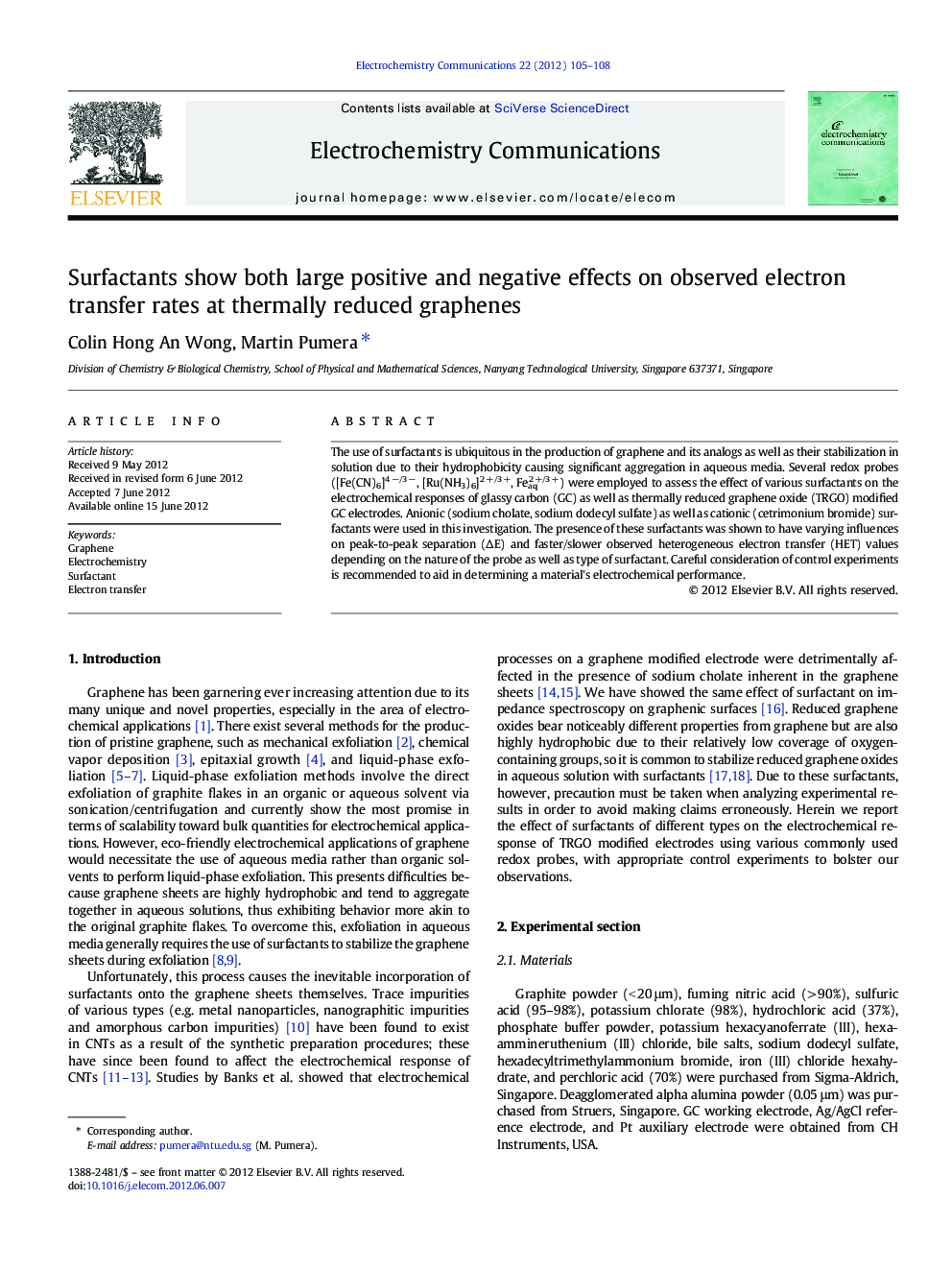| کد مقاله | کد نشریه | سال انتشار | مقاله انگلیسی | نسخه تمام متن |
|---|---|---|---|---|
| 179667 | 459358 | 2012 | 4 صفحه PDF | دانلود رایگان |

The use of surfactants is ubiquitous in the production of graphene and its analogs as well as their stabilization in solution due to their hydrophobicity causing significant aggregation in aqueous media. Several redox probes ([Fe(CN)6]4 −/3 −, [Ru(NH3)6]2 +/3 +, Feaq2 +/3 +) were employed to assess the effect of various surfactants on the electrochemical responses of glassy carbon (GC) as well as thermally reduced graphene oxide (TRGO) modified GC electrodes. Anionic (sodium cholate, sodium dodecyl sulfate) as well as cationic (cetrimonium bromide) surfactants were used in this investigation. The presence of these surfactants was shown to have varying influences on peak-to-peak separation (ΔE) and faster/slower observed heterogeneous electron transfer (HET) values depending on the nature of the probe as well as type of surfactant. Careful consideration of control experiments is recommended to aid in determining a material's electrochemical performance.
► Presence of surfactants can affect the electrochemistry at carbon materials.
► Several redox probes ([Fe(CN)6]4-/3-, [Ru(NH3)6]2+/3+, Feaq2+/3+) were employed.
► Surfaces studied included thermally reduced graphene oxide and glassy carbon.
Journal: Electrochemistry Communications - Volume 22, August 2012, Pages 105–108